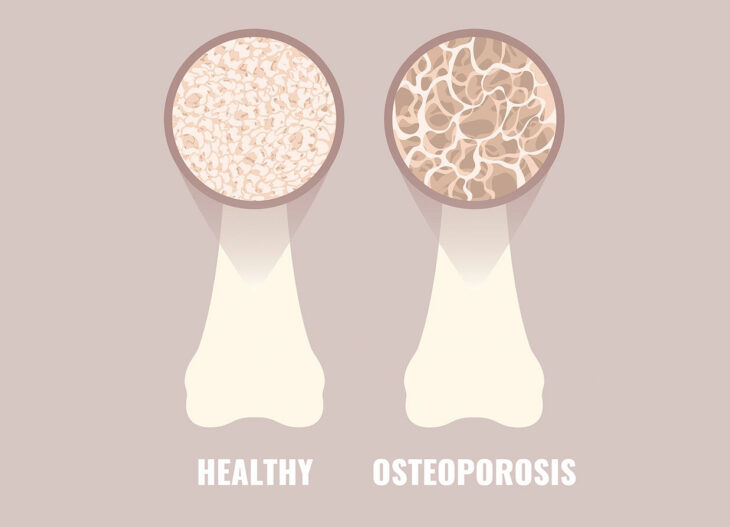Have you ever wondered why grandma keeps getting shorter? The answer is a bit scary. Osteoporosis is causing her backbones to break, collapsing them to lower her height. Everyone over 50 suffers from demineralization of their bones. Usually, we don’t find out how bad it’s gotten until it’s too late and we fracture our hip or back.
Throughout our lives, our bodies constantly absorb and replace bone cells. With osteoporosis, new bone creation doesn’t keep up, weaking our bones. There are many factors in how this balance is maintained. In women, estrogens significantly affect the rate of bone loss, so after menopause, osteoporosis accelerates. Family history, body size and ethnicity also are factors, with bone loss greater in thin descendants of Caucasian and Asian ancestry.
Regular exercise strengths bone. The National Health Service recommends that adults ages 19 to 64 engage in at least two-and-a-half hours a week of moderate-intensity aerobic activity, such as cycling or fast walking. Weight-bearing and resistance exercises are particularly important for improving bone density and helping to prevent osteoporosis.
Keeping your bones healthy depends on a healthy diet. Bone uptake requires calcium and vitamin D. Dairy products provide plenty of calcium, but those avoiding dairy can meet their needs with sardines, fortified orange juice, greens and beans. Vitamin D can be obtained from exposure to sunshine or certain foods like fish, eggs and fortified milk. Fluoride supplementation helps teeth, hips, and backbones but may weaken wrist bones.
While some sources recommend liver as a source of vitamin D, nutritionists warn that the high content of vitamin A in liver can dissolve bones. Similarly, red meat proteins contain high amounts of sulfur amino acids, which cause the body to dissolve calcium. Other foods that come with warnings include salt, because its sodium competes with calcium for absorption; excess caffeine, which also interferes with calcium absorption; and alcohol and smoking, both of which cause demineralization.
The most common test for osteoporosis is the bone mineral density, or BMD. There are simple fingertip tests for this, or more accurate radiographic exams. A dual-energy x-ray absorptiometry scan, known as DXA or DEXA, gives a T-score useful for predicting the risk of fractures.
Medications can slow or even reverse osteoporosis. The most prescribed are the bisphosphonates, such as Fosamax. Some of these are available as weekly or monthly pills while Reclast requires an annual IV infusion. Other drugs include Evista, which mimics estrogen’s beneficial effects on bone density in postmenopausal women. There also are several medications available that speed up bone regrowth.
The main keys to keeping your bones healthy are exercise, nutrition and avoiding cigarettes and alcohol. This is a common and important issue because after age 50, half of all women and a quarter of all men will break a bone due to low bone density. Everyone should have their bone density checked, and if it’s low, start treatment to prevent fractures.
Dr. Philip L. Levin is a retired emergency medicine specialist in Gulfport. Learn more or contact him at www.Doctors-Dreams.com.



